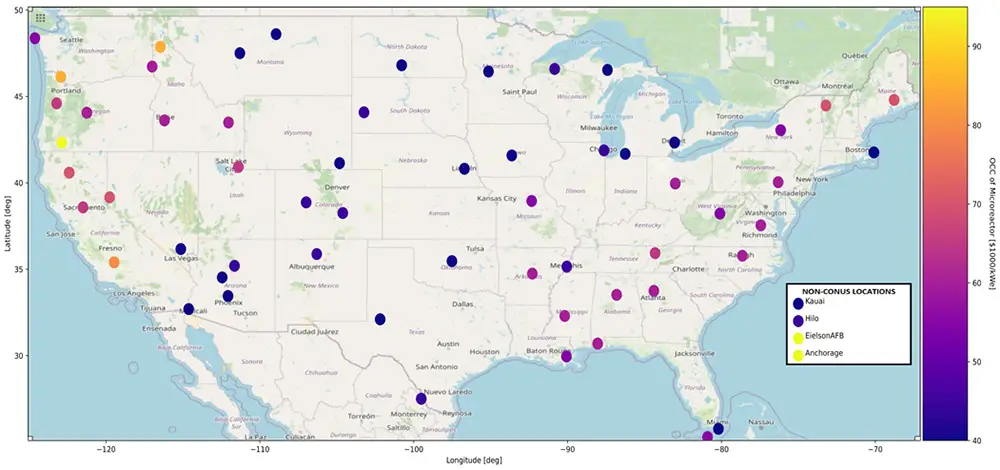While there are clear opportunities for the expansion of wind and solar energy in many U.S. electricity markets, and especially in Wisconsin, there is growing evidence that deep decarbonization of our energy system will need to rely on a low-carbon electricity source that is available on demand.
Nuclear energy has been the largest source of low-carbon electricity over the entire history of our electricity grid. A number of recent studies at UW–Madison have confirmed that achieving a reliable electricity system based only on renewable energy sources and storage will be prohibitively expensive.
We explored this question by assessing the value of using small nuclear reactors at U.S. government facilities, where the government would be a guaranteed consumer for nuclear reactor technology developed with private funding that met specific milestones. Wind and solar technologies have likewise been supported by federal technology policies designed to help them bridge the so-called “valley of death” between first implementation to economically competitive options.
Our study identified over 180 sites with the kind of power demands that would benefit from small nuclear reactors to increase resilience and reduce carbon emissions. The prospect of deploying hundreds of microreactors opens the door for learning-by-doing that has benefitted wind and solar as well.
We used weather and energy demand data from the UW–Madison campus and included one scenario that completely separated the site from an external electricity supply. It was clear that the availability of nuclear energy produced low-cost solutions in this scenario, in which there were periods of low wind and solar energy.

This inspired Nelson Institute environment and resources MS student Antara Khadria to study the role of nuclear energy to support our own UW–Madison heating and cooling system, an application where importing clean electricity may be both ineffective and expensive.
She concluded that nuclear heat was always part of the lowest-cost solutions, and that including some renewables and storage was almost always beneficial.
Nuclear engineering & engineering physics (NEEP) PhD student Ryan Dailey, working with NEEP/energy analysis and policy (EAP) faculty Ben Lindley, asked if climate and demand conditions at UW–Madison could tell us something about the usefulness of nuclear heat in other locations around the country.
Using weather and resource data from across all 50 states, Dailey found that the cost-competitiveness of nuclear was very dependent on solar availability, and that locations with low average wind speed were particularly favorable for microreactors (Figure 1).
Further, he found that the presence of an electrical utility connection substantially reduced the supported capital costs for microreactor technologies. This means that if microreactor capital costs remain high, deployment may work better in isolated locations.
UW–Madison researchers in nuclear and solar energy, in partnership with the National Renewable Energy Laboratory and Westinghouse, have also researched potential configurations and siting options for integrating nuclear and solar thermal energy to meet demand flexibly.
Today, UW–Madison’s NEEP and EAP researchers are providing valuable insights and guidance to consultants about the opportunities and challenges to include nuclear energy in the portfolio of options that will allow our campus to reach its climate goals by 2048.
Author Affiliations
- Paul Wilson, UW–Madison Grainger Professor of Nuclear Engineering and chair of the Department of Nuclear Engineering & Engineering Physics, paul.wilson@wisc.edu
- Ben Lindley, Nelson Institute for Environmental Studies energy analysis and policy (EAP) program and Department of Nuclear Engineering & Engineering Physics professor, lindley2@wisc.edu
- Ryan Dailey, Department of Nuclear Engineering & Engineering Physics PhD dissertator, rdailey@wisc.edu